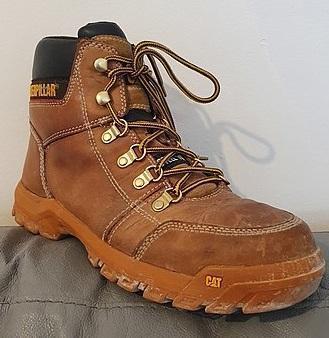When it comes to your feet, proper safety measures are essential to prevent accidents and injuries. In this article, we’ll explore the importance of foot safety in the workplace and provide you with the top 10 tips to help keep your feet safe on the job.
According to the Bureau of Labor Statistics, more than sixty thousand people are forced to miss work annually due to foot injuries. The importance of foot safety in the workplace cannot be overstated, as these injuries not only cause pain and discomfort, but can also lead to lost work time and medical expenses.
In this article, we will explore the importance of foot safety in the workplace and provide you with the top 10 tips to help keep your feet safe on the job. From wearing the right footwear to taking regular breaks and seeking professional help, these tips can help to prevent accidents and injuries, and improve overall foot health.
It’s important to remember that safety starts with you and taking responsibility for your own foot safety on the job. By following these tips and taking proper precautions, you can help to create a safer and healthier work environment for yourself and your colleagues.
- Wear the right footwear: Wearing the right footwear is crucial for foot safety in the workplace. This includes shoes that are appropriate for the job and fit well, providing support and protection for your feet. They should be slip-resistant, have good arch support, and be made of durable materials. For example, if you work in a construction site, steel-toed boots are essential to protect your feet from falling objects or heavy machinery. Wearing the right footwear not only protects your feet but also helps to prevent injuries and accidents. Employers should provide appropriate footwear for their employees or reimburse the cost for their employees.
- Inspect your footwear regularly: It’s important to regularly inspect your footwear for any signs of wear or damage. This includes checking the soles, laces, and overall condition of the shoe. Any issues should be addressed immediately to prevent accidents or injuries. Regularly inspecting your footwear can help to identify any potential problems before they become serious issues, and helps to ensure that your shoes are in good condition to keep your feet protected. Employers should encourage their employees to regularly check their footwear and provide them with resources to purchase new shoes when necessary.
- Use foot protection: In certain jobs, additional foot protection may be required. This includes steel-toed shoes, safety boots, or safety shoes. These types of footwear provide added protection for your feet and can help to prevent injuries. Employers should provide appropriate foot protection for jobs that require it, and educate employees on the importance of using the right footwear for their job.
- Be aware of hazards: Be aware of hazards in the workplace that can cause foot injuries. This includes wet or slippery surfaces, sharp objects, and heavy machinery. Take precautions to avoid these hazards, such as using slip-resistant shoes or taking extra care when working around heavy machinery. Employers should conduct regular safety assessments to identify any hazards in the workplace and implement measures to mitigate them.
- Take breaks: Standing or walking for long periods of time can cause fatigue and put stress on your feet. Taking regular breaks to rest and stretch your feet can help to prevent injuries and improve overall foot health. Employers should encourage their employees to take breaks throughout the day to rest their feet and prevent fatigue.
- Stretching: Stretching your feet before and after work can help to improve blood flow, reduce fatigue and prevent injuries. Simple exercises such as rotating your ankles, flexing your toes and massaging your feet can help to improve flexibility and prevent stiffness. Employers should encourage employees to take a few minutes to stretch their feet before and after work.
- Proper lifting techniques: Use proper lifting techniques when handling heavy objects to prevent injuries and stress on your feet. This includes bending at the knees and keeping the object close to your body. This can help to distribute the weight evenly and reduce stress on your feet and legs. Employers should provide proper training on safe lifting techniques and stress the importance of using them.
- Foot hygiene: Maintaining good foot hygiene is important to prevent foot infections and injuries. This includes keeping your feet clean and dry, and checking them regularly for any signs of irritation or injury. Employers should provide appropriate facilities for employees to maintain foot hygiene and educate employees on the importance of foot hygiene.
- Pay attention to pain or discomfort: If you experience pain or discomfort in your feet, it’s important to address it immediately. This could be an early sign of an injury or condition that needs to be treated. Employers should encourage employees to report any pain or discomfort they experience in their feet and provide resources for employees to seek medical attention if necessary.
- Seek professional help: If you have a foot condition or injury, it’s important to seek professional help. This can include seeing a podiatrist or a foot and ankle specialist. They can provide you with the proper diagnosis and treatment to help keep your feet healthy and prevent injuries. Employers should provide resources for employees to seek professional help if they have a foot condition or injury.
In conclusion, foot safety is an important aspect of workplace safety. By following these tips and taking proper precautions, you can help to prevent accidents and injuries, and improve overall foot health. Remember, safety starts with you, and it’s important to take responsibility for your own foot safety on the job.
References:
- https://www.bls.gov/news.release/archives/osh2_03302005.pdf
- Image reference: https://commons.wikimedia.org/wiki/File:Caterpillar_Outline_steel_toe_work_boots.jpg










